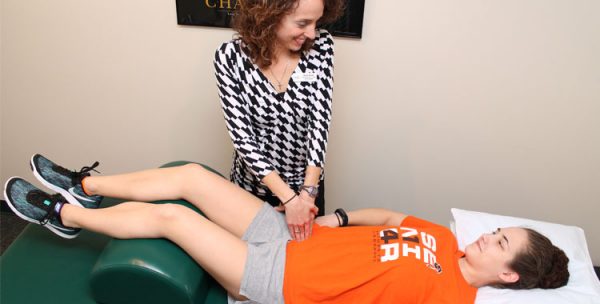The Psoas Muscle: What It Is and Why It’s Important
by BusinessWoman magazine / 0 Comments / 2572 View / February 27, 2017
Unlike the quads, triceps, or glutes, the psoas (pronounced “so-as”) muscle isn’t commonly known, but it does serve an important function.
Alicia Bettis, PT, DPT, MSATC, OCS, Cert.MDT, and center manager at Drayer Physical Therapy’s Linglestown office, says that most of the general public isn’t aware of this muscle group, which connects the lower lumbar spine and lower lumbar vertebrae into the hip.
Bettis holds a Master of Science degree in athletic training and a doctorate in physical therapy from Shenandoah University. She has also completed an orthopedic residency spine movement fellowship, so Bettis is very much aware of the psoas muscle and its functions.
“This muscle is important to everyone, no matter what their age. You need to have the right amount of strength, tone, and balance in this muscle,” she says.
The word psoas is Greek and means “loin region.” The psoas muscle group makes an upside-down V; it connects to the spine starting at about the bottom point of the ribcage and works its way down to the top of the femur. As such, Bettis explains, it’s the primary connector between the torso and legs.
The psoas helps with core and trunk stability, plays an important role in posture, and acts as a hip flexor (a group of muscles that help you move, or flex, your leg and knee up toward your body). It helps support the internal organs and pelvic floor.
Bettis points out that in conjunction with supporting the pelvic floor, the psoas muscle also plays a role in incontinence and can be strengthened to help with incontinence issues, balancing out overuse and underuse throughout the pelvic girdle. It also plays a role in pelvic pain during intimacy.
Bettis notes that the psoas is also a critical muscle when doing breathing exercises—tendons of the diaphragm connect to the lumbar area near the psoas, and some of the ligaments intertwine.
Additionally, certified yoga instructor and filmmaker Danielle Prohom Olson (www.bodydivineyoga.wordpress.com) calls the psoas muscle “the muscle of the soul.”
“The psoas is connected to the diaphragm through connective tissue or fascia, which affect both our breath and fear reflex. This is because the psoas is directly linked to the reptilian brain, the most ancient, interior part of the brain stem and spinal cord,” Olson says.
So whether you’re a singer doing vocal exercises to warm up before a performance or you’re practicing yoga, Pilates, or other exercises, the psoas matters. According to Drs. Josh and Chelsea Axe (www.draxe.com), a strong psoas is not only important for good posture and a healthy lower back, but it can also aid in a pain-free pregnancy.
Bettis says the psoas should be well toned but not too toned—if the muscle is not strong enough or is overworked, it can cause pain, particularly in the lower back and pelvic region. The Axes assert that a weak psoas can also cause sway back, hamstring strain, knee pain, and pelvic tilt.
Causes of a tight psoas can include weak abdominal, gluteal, or pelvic muscles; chronic sitting (yet another reason to periodically stretch or walk around when working at the computer for lengthy periods); and prolonged cycling.
The Axes report that symptoms of a weak psoas include: discomfort, pain, and aches in the front hip socket; restriction in the hip socket; restriction moving the thigh backward; deep pelvic pain on the side that feels tight; deep “bellyache”; and chronic constipation.
Bettis cautions that the psoas can be overworked without realizing it. To help stabilize the psoas if it’s too tight, she recommends working other core muscles, such as the glutes. Olson opens and closes her yoga practice with hip-opening poses with the specific intention of releasing tension in her psoas and hip flexors.
“I’d breathe and imagine tension flowing out of constricted muscles to be released as energy into the torso. It worked—I’d feel my body soften, yet somehow grow stronger,” she says.
A physical therapist can manually and safely release the tension, Bettis says.
“Once we release the tension, we teach clients what to work to decrease the over-toned muscle. Once the muscle is stabilized and they’re released from therapy, they have the tools to ensure that it doesn’t go back to that point,” she says.
Be mindful of posture and taking breaks when working at a computer, and be aware of the role that the psoas plays in everyday activities, such as lifting a bag of groceries. BW


Your Commment
You must be logged in to post a comment.